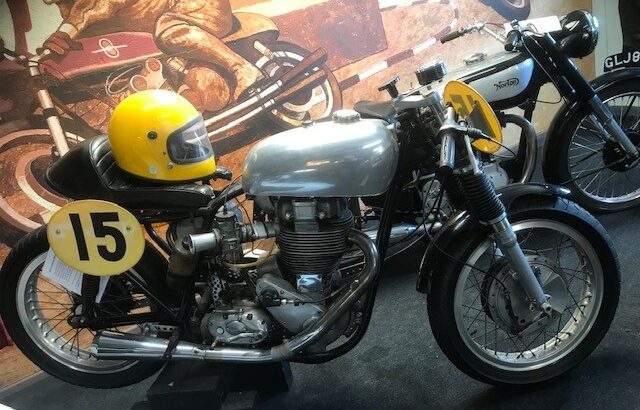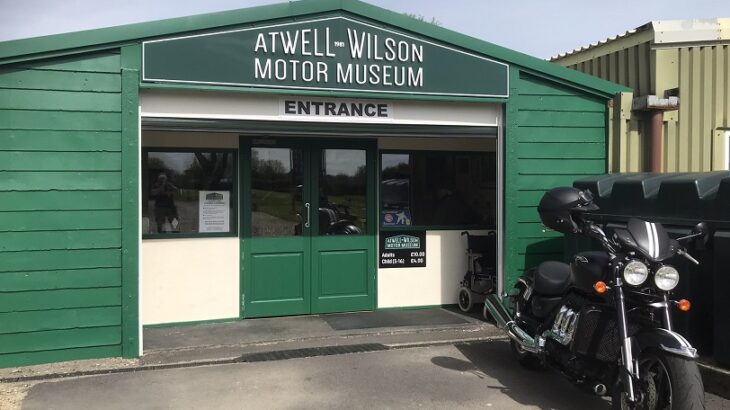Imagine this: A bike putting out about a 100bhp, with a 150 mph top end. This bike is fitted with R1 inspired brakes, aerodynamically optimised fairing and aero package. All of this kept in check with multi adjustable suspension? Sounds great, doesn’t it? How about all this for the right side of £2000? Unbelievable? But it happens to be true! There is however a catch – it is a quarter of a century old!
Venerable but Capable
I am of course referring to my venerable, but still immensely capable Yamaha YZF600R Thundercat. It’s interesting that as the sports-bike genre is seemingly coming back into vogue, you can pick up a bike last sold new over twenty years ago that has a similar power output and better performance figures for peanuts.
The Thundercat, even by the prevailing standards in the 1990’s was physically large for a 600. In the Yamaha line-up the R6 was the fully focussed sports-bike while the Thundercat was touted as a more versatile option. Commuting and touring could be done with ease.
The riding position, while still very sporting, was more comfortable and the tank/seat/clip-on bars relationship more expansive. Controls were simple too. Typically basic clocks of the period: Revs, speed, temp…sorted. Use the trip meter for fuel range.
All were simple, crisp and well laid out. Business like. Same goes for the switch blocks. The Thundercat just wants to be used.

The four-cylinder engine fires up immediately from cold if you go with full choke (remember those?) and soon settles down to a smooth, crisp sounding idle. If well looked after and properly set up the engine spins freely and easily to the 13,000 rpm redline.
Quick, if you work for it
The power delivery is fairly peaky. To get really serious the tachometer needle needs to be north of the 10k mark. But it no hardship to keep the engine spinning and it laps up the treatment with the minimum of fuss. There is a enough low down and mid-range shove to punt you along in a more considered manner and take in your surroundings a little more. On ride-outs the 600 still can hold its own with more powerful and up to date ‘opposition’ if you are really determined and on the road you can only go so quickly in any case.

My Thundercat on the day I bought it back in March 2000
I have stuck with the standard pipe. It is pretty hushed, but it makes a good enough noise for me. I fitted a set of stainless down-pipes a few years ago and they added a little welcome ‘zing’ to the engine note as the bike is revved hard.
Economical Too
For a quick bike, often ridden briskly it is pretty good on fuel and 50 mpg is pretty easy to achieve. To be honest I don’t monitor the exact figure, but I get around 180 to 200 from a tank full of petrol. I’d advise using E5 fuel too, especially if you only ride occasionally rather than day in, day out.
The brakes were top of the line in 1998 but these days are a little outgunned by the latest offerings. Also forget any form of ABS or linking. They are like the rest of the bike, basic but effective. Keep them clean and fluid fresh and they are well matched to the performance capabilities of the bike. I’ve never found them wanting to be honest. They have a nice firm feel and have certainly aged better than the brakes of many similar vintage bikes I have tried, especially from Kawasaki.
The Weakest Link…
The suspension is again straight forward, mono-shock on the back with a limited adjustment as stock. As they wear out around the 20,000-mile mark conversions to R6 set ups are common. I stuck with the standard set up until about 25,000 miles. The bike tended to weave a little in long open bends and while it would go around perfectly well, it was getting a little disconcerting! A new Hagon restored calm.
The front forks are also a little on the soft side and firmer fork-oil does wonders for feel and damping. Being honest I think this slightly softer well damped set up is well suited to the pot-holed mess that is all too commonly found on British A and B roads. It helps with comfort too. The Thundercat is a comfortable bike of its type, though obviously specialist touring and adventure bikes are more cosseting. I’ve been all over the UK and Europe on it and I have coped fine. Now I am getting towards 60 and creaking a bit, I find it can get a bit uncomfortable after only 100 miles or so, especially on slower running. But that’s my fault, not the bikes.

Heading Into Italy
Fun machine
Overall though the Thundercat is a fun bike to attack a country A road, with the engine screaming and brakes and suspension working together well to keep on the tarmac and out of the hedges.
I have found Michelin Pilot tyres suit it well, but I was impressed with Maxxis Supersports when I used those.
Build quality is excellent and the this born out by the condition of my example after 26 years on UK roads. When I clean the thing the paint is deep and lustrous. There is some evidence of the finish going on the engine cases, but a morning with wet and dry and a rattle can of silver paint will soon sort that. All the electrics still work perfectly and it always fires up easily. Reliability has been perfect. Even the OE battery lasted 20 years. Even all the bulbs are original.
Dig out a decent example and don’t look back
Overall, the Thundercat remains a good looking, hugely capable bike. Nearly thirty years after it first hit the market it still makes a great machine: fast, fun, reliable, reasonably comfortable . Whether you are an experienced biker looking for a budget option, or a new rider looking for your first ‘serious’ superbike take a long hard look at a Yamaha YZF600R Thundercat. Find a good example and you won’t look back…
Words and Pictures: Tony Donnelly



 Thoroughly modern and very attractive
Thoroughly modern and very attractive
 Good to see practical features such as fork gaiters fitted
Good to see practical features such as fork gaiters fitted

 450cc Water-cooled Twin cam single. A2 Compliant and neatly integrated exhaust
450cc Water-cooled Twin cam single. A2 Compliant and neatly integrated exhaust
 Triumph X75, one of my favourite bikes
Triumph X75, one of my favourite bikes  Barry Sheene’s last race bike
Barry Sheene’s last race bike No wonder they leak oil
No wonder they leak oil Check out that steering arrangement
Check out that steering arrangement Outboard rear disc – odd
Outboard rear disc – odd The Norton
The Norton  I love Vincent V-Twin Engines. They are
I love Vincent V-Twin Engines. They are  Wild exhausts
Wild exhausts Makes you feel proud
Makes you feel proud BSA Fury and its Triumph Bandit brother behind. 350cc four strokes from the early 1970’s abandoned in the pre-production phase. Hundreds were scrapped. What a missed opportunity. Honda sold 26,000 of the rather mundane CB250N Superdream in the UK alone. These bikes could have faced that sales challenge with ease in my opinion
BSA Fury and its Triumph Bandit brother behind. 350cc four strokes from the early 1970’s abandoned in the pre-production phase. Hundreds were scrapped. What a missed opportunity. Honda sold 26,000 of the rather mundane CB250N Superdream in the UK alone. These bikes could have faced that sales challenge with ease in my opinion Prototype Triumph 1000cc four. Could of taken on the Kawasaki Z1 and Honda CB750K
Prototype Triumph 1000cc four. Could of taken on the Kawasaki Z1 and Honda CB750K Just exquisite
Just exquisite Finely crafted, what wonderful workmanship
Finely crafted, what wonderful workmanship





























 Yours truly at the helm, the bike was still on standard pipes at this point. I look happy enough though!
Yours truly at the helm, the bike was still on standard pipes at this point. I look happy enough though!
































































